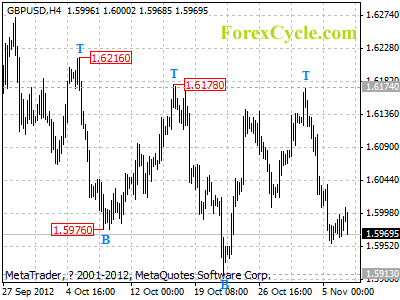By MoneyMorning.com.au
Over the past 28 trading days gold dropped more weight than a Jenny Craig model.
Sure, the shiny stuff can probably fit into a smaller pant size. But the bigger problem, when it comes to apparel, is the shiver this recent pullback has sent down the britches of gold bugs – indeed, gold’s US$100-move in a month is nothing to sniff at!
Today we’ll look at three possible explanations for this downward movement – and some added insight for gold’s next move…
There are plenty viable reasons why the gold price is pulling back, today we’ll cover the three most pressing…
Gold’s Technical Drop
Back on May 16th of this year the outlook for gold didn’t look good on a chart. After hitting an all-time high above $1,900 in August 2011, gold started on a descending journey – settling in May below $1,550.
From there, prices consolidated and traded in a tight window around $1,600. That’s when the recent rubber band “snapback” rally kicked in and propelled the metal towards $1,800 -hitting a high of US$1,791 just last month.
Gold prices have since pulled back.
To a chart-watcher this could signal trouble. Since hitting a high over $1,900 in 2011, gold has made three subsequent runs at the $1,800 mark. Each time failing to break above the psychological threshold (on a daily close basis).
If you look at the one-year gold chart you’d see this triple try. Each time the metal failed to break through the $1,800-mark it was punished with a subsequent $100 downturn.
Nov 2011: Rally to $1,795, subsequent drop to $1,598
Feb 2012: Rally to $1,781, drop to $1,540
Oct 2012: Rally to $1,791, drop to $1,690
Looking at the most recent downturn on a 30-day gold chart, there was a methodical stair-step lower.
With each passing day, traders discounted gold’s probability to head higher and thus, on a short-term basis, gold sold off. After all, traders want short-term profits and if it’s not likely that gold will bust above $1,800 and on to higher-highs…they head to greener pastures.
That’s where things stand today. So from a technical, chart-watching standpoint gold’s dip could be as simple as that. I can hear it now in the pit… ‘Three strikes and you’re out!’
Gold’s Election Bugaboo
Caveat: the next explanation for gold’s price drop is a stretch.
With that said, there could be some election implication built in to gold’s recent downturn.
Although your editor isn’t sold on the idea that either candidate will cut government spending, the gold market could be discounted on increased probability that Romney will win today’s election.
A few months ago, most polls showed president Obama with a solid margin over Romney. Today – especially in the past few weeks – that margin and the likeliness of an Obama runaway win has dropped.
Crunching the numbers on a potential Romney win, the number-crunchers could have shaved a few points off the price of gold.
The idea is that Romney’s administration would, in fact, steer the ship closer to fiscal sanity. Whether or not that would actually be the case isn’t the point. But if speculators think it could happen, the price of gold could be reflecting that probability.
There’s actually a pretty easy way to tell if we’re right on this one, too. If Obama remains in office, gold prices should rally.
Hey, your guess is as good as mine, but it would be interesting to see a big jump on an Obama win ($20, $30, $50?) At that point we’d know what the number-crunchers think of another four years of the same.
Gold’s Nasty Relationship With The U.S. Dollar…
The last explanation for gold’s recent downturn is your editor’s favorite.
In the past six months gold has been controlled by the movement of the US dollar.
See, like all other staple commodities, gold is bought and sold in US dollars, the world’s reserve currency. We’re not talking about manipulation here. Instead, it’s just the direct relationship that the dollar and gold share.
With trouble looming for the global economy and currency woes plaguing the Eurozone, there’s been a lot of support for the dollar. And if you didn’t notice lately (I can’t fault you) the dollar recently broke above its sideways trading pattern – which propped the dollar index back above 80. This is a significant move.
It’s not out of the question to see another short-term run for the dollar, either. Looking at the fundamentals, the Eurozone doesn’t seem to be fixing itself anytime soon. And to be sure, any weakness in the Euro makes for a stronger US dollar.
Add in the fact that the U.S. is having a little rebound in energy production and manufacturing (both positive for the dollar) and you’ll see that the short-term outlook for the dollar could be up – even in the face of some Bernanke push-button, money-printing economics!
Time will tell on this last point. But just remember that the US dollar is in control here. Whereas we’re used to a weak dollar and inflationary measures by the Federal Reserve, a short-term bounce could create more headwind for gold. It’s sad but true.
The Overall Gold Trend, Is Still Our Friend…
The US dollar helps explain gold’s short-term pullback, but it can also give us a good idea as to where the metal may be headed.
You see, regardless of Eurozone worries and a bump in U.S. manufacturing, the Federal Reserve has yet to show ANY ability to stop adding more dollars to its inventory. This is the same ‘dollar be damned’ trend that took gold prices from $300 to today’s price near $1,700.
Don’t fear a normal gold correction. All of the long-term fundamentals that lead us to buy gold – including the last point about the Fed – are still intact.
If you’re into gold for the short-term trading action, today’s market presents a tricky proposition. But if you’re in it for the long-haul, like me, the recent pullback is nothing more than market noise in gold’s eventual move higher. Stay tuned.
Matt Insley
Contributing Writer, Money Morning
Publisher’s Note: This article originally appeared in Daily Resource Hunter
From the Archives…
More Bad News for the Asian Century
2-11-2012 – Kris Sayce
Is the Asian Century Already Kaput?
1-11-2012 – Kris Sayce
Has the Australian Dollar’s Luck Just Run Out?
31-10-2012 – Murray Dawes
How the Aussie Dollar is Caught Up in Big Bankers’ Games
30-10-2012 – Callum Newman
Does Excessive Government Spending Make You the World’s Best Treasurer?
29-10-2012 – Kris Sayce

Don’t Fear the Recent Gold Correction





 Tradervox.com (Dublin) – This is a possibility that Greece will leave the euro after the US election. While this conclusion is not necessarily related to reports indicating that Europe want to help Obama win the election. There are reasons that would lead to Greece exit from the monetary union in the coming weeks. Some of these reasons are directly related to the election while others are just coincident.
Tradervox.com (Dublin) – This is a possibility that Greece will leave the euro after the US election. While this conclusion is not necessarily related to reports indicating that Europe want to help Obama win the election. There are reasons that would lead to Greece exit from the monetary union in the coming weeks. Some of these reasons are directly related to the election while others are just coincident. Tradervox.com (Dublin) – With Greece and troika divided on the labor reforms and the fragile situation in Greece, there is little hope for a deal. The US Non-Farm Payrolls impressed last week, pushing the pair down considerably.
Tradervox.com (Dublin) – With Greece and troika divided on the labor reforms and the fragile situation in Greece, there is little hope for a deal. The US Non-Farm Payrolls impressed last week, pushing the pair down considerably. Tradervox.com (Dublin) – The 17-nation currency dropped against the dollar to almost eight weeks low as concerns about the Greece securing a bailout package rose in the market. The currency dropped against most of the peers ahead of data that is expected to show the German economy is succumbing to the debt crisis in the region.
Tradervox.com (Dublin) – The 17-nation currency dropped against the dollar to almost eight weeks low as concerns about the Greece securing a bailout package rose in the market. The currency dropped against most of the peers ahead of data that is expected to show the German economy is succumbing to the debt crisis in the region.